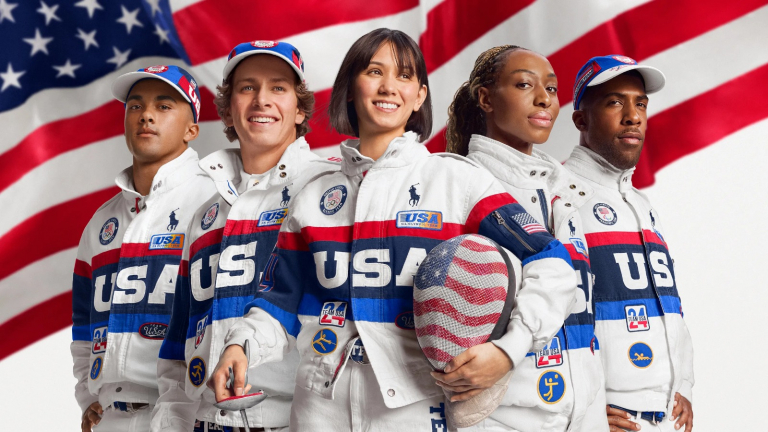How fight for a better healthy future after a global pandemic?
Healthy Future
During a global pandemic, there is plenty of information and awareness about the detrimental effects that the fashion industry has caused on waste, contamination, labor conditions and over consumption in healty future. It is no secret that textile production is a top of greenhouse gas contamination, leaving behind international air travel and marine ships combined.

Clothing made out of polyester, nylon or spandex account for 342 million barrels of oil a year. Even worse, 33% of Viscose fabric is made out of ancient or endangered forest oil and its toxic chemicals are released on rivers which many people depend on.
Healthy Future in World
The Citarum River in Indonesia, for example, is the major resource for it people to survive, however, due to the toxic chemicals released by fast fashion factories in the sector, residents — including children — are suffering from liver problems.
Not to mention the horrible conditions that many employees and sometimes children face to make this happen (The Ugly Truth About Fast Fashion, 2019). Undoubtedly, fashion’s supply chain can’t continue operating as normal.
Over the years there have been efforts from many companies trying to adapt to more sustainable means and responsible means, yet the transition and challenges they face can affect their business model.
For that reason, Ilka Jordan, founder and CEO of the Jordan Alliance group, has committed herself and her team to confront these challenges with fashion businesses in order to turn the industry more aware and socially responsible. Jordan Alliance Group is a consultancy firm focused on implementing social values while at the same time conducting strategic analysis that assists each company reach its respective goal.
During the holiday season Americans spend 1.1 trillion dollars hence, it is important to acknowledge the growth and influence that the fashion industry has in society and, for that matter, the power it has to cultivate a positive change for the future. With the help of her highly rewarded and experience team Ilka has created one of the first pro-active consultancy firms focused on the betterment of the fashion industry.

In a Q&A with Ilka, we learned a little more about herself and what inspired her to create the company:
1. What is your background?
I started my career in the Fashion Retail Industry over 25 years ago. My undergraduate degree is in Apparel Production Manufacturing from the Fashion Institute of Technology (FIT), and my graduate degree is in Information Technology from, American InterContinental University (AIU). My work in the industry has always been with specialty retailers and global brands on corporate cost-saving initiatives to drive Product Development and Supply Chain efficiency with agile business processes and technology.
2. When was Jordan Alliance founded? Why was it founded?
I founded Jordan Alliance Group in 1999. At that time, the focus was on improving product development efficiency through technology. As the industry evolved and new retail supply chain strategies emerged, we expanded our services to help retailers develop strategies to transform supply chains and company cultures to embrace innovative business models and digital technology as they transition toward capitalizing on circularity. Our service offerings also include Enterprise Change Management and Diversity, Equity, and Inclusion from a Business and Talent Management perspective to support an organization’s successful transformation.
3. Was there a void that needed to be filled in the consultancy, retail, and the fashion industry?
Yes, there was a void that needed to be filled in the fashion industry. The fashion industry struggled with adopting technology, mostly in frontend creative operations. With any technology implementation, it is expected to have a strategic plan in place to address the significant functional role changes, clearly defined responsibilities, and updated business processes to support the new activities for successful adoption. Establishing a governance model would help measure and report on progress and to support any new strategies as the business needs continued to evolve. Technology that is strategically implemented offers better methods of working towards circularity. Technology enhances sourcing and garment development, enables transparency, and traceability along the supply chain.
4. What is the future of fashion in your eyes? Is retail “alive”, “dead” or is there a halfway point?
Retail is alive and evolving… In my eyes, digital strategies, and innovative business models are reshaping the future of fashion. The imperative is to work more responsibly to meet sustainability goals towards a circular economy. Retailers are much more aware of the benefits of providing products and services driven by the voice of the customers. In fact, customers are loyal to a company that supports addressing social and environmental issues if given the opportunity. Customer insights and data analytics are effective tools when the information is captured early and used correctly to help retailers plan, design, produce, and sell the right merchandise to retain and grow their customer base.
5. You were a recent participant at the “Worldwide Talks” event. What in your mind, were the key similarities between you & other speakers and the key differences?
The Worldwide Talks was an excellent event to connect like-minded people and businesses to talk about and share their insights on the circular economy concepts which are truly becoming priorities in the fashion industry. The similarities we all had were our passion to provide more awareness and education around the environmental and business benefits of transitioning supply chain from a linear to a circular economy.
I loved that there were so many speakers and panel topics that provided different perspectives and approaches to achieve circularity through different methods, sectors of the supply chain, and ways to get it done through the various networks and new business models.
6. Do you see fashion changing completely via digitalization and ways of technology or slightly?
I am seeing more interest from companies wanting to utilize digital technology to accelerate sustainability and scale solutions across every sector of the supply chain. There are new and better ways technology is being used to move the business forward, efficiently, effectively, and intentionally. Now more than ever, there is a common understanding that technology provides better transparency and collaboration with suppliers and data analytics for accurate reporting to support better decision making.
7. What would you say to new fashion brands about fashion business and what to expect?
I would say this is an extremely exciting time for new fashion brands… There is a rare opportunity right now to get rid of the old traditional ways of working that are no longer relevant. Now is the time to introduce new materials, resources, and digital tools to work more creatively, responsibly, and profitably.
Companies starting their circular journey do not have to control all stages across the supply chain. I would advise focusing on cultivating relationships with other businesses to create value networks up and downstream the supply chain.
8. What do you think needs to change about fashion and the industry?
The Fashion Industry as a whole needs to acknowledge the environmental and business benefits of retail supply chain circularity. This means rethinking strategies, the way materials are sourced, and intentionally shifting to a circular business model by designing products with a focus on keeping it in use longer with the next phases of use in mind and later being able to return it safely to the biosphere at the end of its lifecycle.
There are so many innovative business models and services “companies” can partner with to extend the lifecycle of products such as resale, repair, renew, remake, etc. Now more than ever, it is easier to build a network of partners and suppliers that are fully in compliance and are capitalizing on the concept of supply chain circularity.
The fashion brands that embrace these concepts and the innovative business models that truly support circularity in fashion will thrive.
9. How do you feel Jordan Alliance will take a part in that?
Our clients are typically seeking our help with the strategy and execution of their initiatives. This includes operationalizing sustainability efforts toward circularity, accelerating the use of digital technology, and exploring innovative business models to drive profitable growth. The power is working together at a strategic level to assess where they are on their journey towards a circular economy.
We help build clearly defined plans to create supply chain resiliency through transparency, accountability, and governance. This means identifying core business areas and operations along the supply chain that when done differently, will ensure sustainability goals are not only met, but accurately measured, reinforced, and optimized.
Due to the many interconnected functions, technologies, processes, and services across the supply chain, it is certain that any changes to operations will result in changes to business processes, functional roles, and responsibilities, product lifecycle cadence, resources, etc. That is why we always take a holistic approach that includes a comprehensive enterprise change management plan to support a positive experience, education, adoption, and monitoring for continuous improvement.
To learn more about the company visit: https://www.jordanalliance.com/teamjag
Want know more about Fashion World? FASHINNOVATION!
* Writer by Bernarda Chiriboga






